
An Educated Collector is Our Best Client
In business for nearly two decades, we are a well established, popular contemporary art boutique specializing in expertly chosen, blue chip prints, multiples, uniques, books, ephemera and merchandise at different price points, with a focus on the secondary market. Please click on the "Contact Us" button at the bottom of this page for questions about any work, pricing and/or to arrange to visit our showroom/gallery - located in between Manhattan's Flatiron and Chelsea Flower Districts.
ALPHA 137 GALLERY
ALPHA 137 GALLERY
Roy Lichtenstein, Girl With Spray Can (Deluxe hand signed edition of the 1 Cent Life Portfolio, from the estate of artist Robert Indiana), 1964
Description
Roy Lichtenstein
Girl With Spray Can (Deluxe hand signed edition of the 1 Cent Life Portfolio, from the estate of artist Robert Indiana), 1964
Lithograph splayed across two sheets on wove paper (Hand signed by Roy Lichtenstein on the front)
Pencil signed on the lower right front; numbered 85/100 on the portfolio colophon
Frame included
This iconic 1964 Roy Lichtenstein lithograph, splayed across two separate pages, is from the Deluxe, hand signed edition of only 100 of the legendary 1 Cent Life Portfolio - one of the most important and celebrated artistic collaborations of the 1960s. (The present Deluxe hand signed edition is 100; the regular unsigned edition was 2000)
This lithograph was part of the complete portfolio acquired from the estate of Pop Artist Robert Indiana, who also contributed a work to the portfolio. Inexperienced dealers often separate the "Girl" and the "Spray Can" and attempt to sell them separately because they are on two separate sheets - but they were created by Roy Lichtenstein together as one print - "Girl with Spray Can" exactly as presented here. Documented prints from the hand signed edition of 100 rarely appear on the market. This is one of them. The work is pencil signed by Roy Lichtenstein on the front and all of the prints are unnumbered, as the complete portfolio is numbered on the colophon page - a copy of which is included for provenance.
Provenance:
Acquired from original, complete 1 Cent Life Portfolio, # 85/100 (Artists & Collaborators) from the Estate and Collection of Robert Indiana
(There was also an unsigned edition of 2000)
Chinese American artist and writer Walasse Ting, in collaboration with Sam Francis, assembled a group of the most significant Pop and Abstract Expressionist artists in America, including Andy Warhol, along with the European COBRA artists to create the definitive artistic portfolio of lithographs with accompanying text by Walasse Ting. The Deluxe edition, which features hand signed prints, was published in a limited edition of only 100. This is one of them. Of the 100, editions numbered 60-100, or 40 portfolios, were reserved exclusively for Artists & Collaborators. This hand signed Roy Lichtenstein lithograph is from the portfolio numbered 85 (Artists & Collaborators), which was acquired from the Estate and Collection of Robert Indiana, another one of the artists who contributed to the 1 Cent Life portfolio.
It is elegantly floated and framed in a museum frame with UV plexiglass with Optium museum plexiglass - the highest quality available.
Signed examples of this portfolio with such superb provenance rarely appear on the marketplace. This is a true collectors item, from the most desirable and influential era in Pop Art history.
Published by E.W. Kornfeld, Germany, Written by Walasse Ting, Edited by Sam Francis
Provenance: Acquired from original, complete 1 Cent Life Portfolio, # 85/100 (Artists & Collaborators) from the Estate and Collection of Robert Indiana
Framed on Optium Museum Tru-Vue Plexiglass
Measurements:
Frame
20.25 inches vertical by 27 inches horizontal by 1.5 inches
Prints
16 inches vertical by 23 inches horizontal
More about the Signed (Deluxe) Edition of 1 Cent Life portfolio
In 1962, the Chinese-American artist Walasse Ting shared his dream project with painter Sam Francis: to create an anthology of his poetry illustrated by leading artists of their time. Over the next two years, Ting and Francis recruited leading Abstract Expressionists and Pop artists—Andy Warhol, Joan Mitchell, Robert Rauschenberg, Robert Indiana, James Rosenquist, Mel Ramos, Claes Oldenburg and Roy Lichtenstein, among them, along with the European COBRA artists, like Asger Jorn, Karel Appel and Pierre Alechinsky —to create prints for their collaborative publication, which they playfully titled 1¢ Life. Published in 1964 by E. W. Kornfeld in Switzerland in an edition of 2,000 books, 1¢ Life features 62 color lithographs by a total of 28 iconic artists, including colorful lips by Warhol, abstract splatters by Mitchell, and cartoon girls by Lichtenstein. The accompanying many of these Pop Art prints are the poems of Walasse Ting - racy and avant garde for the early 1960s. The lithography was executed by Maurice Beaudet, of Paris. Complete examples of 1¢ Life can be found in the permanent collections of the Metropolitan Museum of Art, the British Museum and many other public and private institutions around the globe. Today, 1 Cent Life is considered one of the best artist's books ever created- coming out of one of the most influential decades in modern art.
Apart from the familiar regular edition of 2000, only 100 of these lithographic portfolios were hand signed by the artists (the Robert Indiana being stamped with his official stamp), and of those only 40 were reserved for Artists and Collaborators, numbered 60 through 100. (The present work, being # 85/100)
Most lithographs are printed on two separate pages. This famed portfolio was produced and assembled by Chinese-American-European artist Walasse Ting in conjunction with American artist Sam Francis, Swiss publisher E.W. Kornfeld, and French printer Maurice Beaudet - a truly global endeavor. The portfolio, featuring some of the most recognizable lithographs of the era, was the result of an unprecedented, ambitious international collaboration between American Pop Artists of the Sixties and the European COBRA artists.
About Roy Lichtenstein:
Pop Art looks out into the world. It doesn’t look like a painting of something, it looks like the thing itself.
—Roy Lichtenstein
Roy Fox Lichtenstein’s (1923–1997) high-impact, iconic paintings have become synonymous with Pop art—a movement he helped originate—and his merging of mechanical reproduction and hand drawing has become central to the critical understanding of the movement.
Born in New York, Lichtenstein developed an interest in drawing, science, and jazz music at a young age. He attended Ohio State University (1940–42), before being drafted into the Army (1943–45). Supported by the G.I. Bill following the war, Lichtenstein resumed his art studies at the School of Fine and Applied Arts at Ohio State and graduated with an MFA in 1949. He stayed in Ohio for the next eight years, working first as a teacher and later as an industrial draftsman and furniture designer, among other part-time roles. Lichtenstein then accepted an assistant professorship in industrial design at the State University of New York, Oswego, which led to a teaching position at Douglass College at Rutgers University, New Jersey.
In 1961 Lichtenstein painted one of his first Pop paintings, Look Mickey. This work, in its use of cartoon characters and deliberate imitation of the Ben-Day dot commercial printing process, marked a major turning point in his career. Lichtenstein had his first solo show with Leo Castelli in early 1962—which sold out before the opening—and another in 1963. After this commercial success with Castelli, he resigned from Rutgers in 1964 and moved to back New York to concentrate exclusively on his art. Into the next decade, he depicted stylized landscapes, consumer-product packaging, adaptations of paintings by famous artists, geometric elements from Art Deco design, parodies of Abstract Expressionism, and war scenes and explosions. Despite their immense variation in subject matter, all of these works underlined the contradictions of representing three dimensions on a flat surface.
The late 1960s saw Lichtenstein’s first museum surveys: in 1967 the Pasadena Art Museum initiated a traveling retrospective, in 1968 the Stedelijk Museum, Amsterdam, presented his first European retrospective, and in 1969 he had his first New York retrospective, at the Solomon R. Guggenheim Museum. He began living in Southampton, New York, in 1968, and in 1984 he acquired a studio loft in Manhattan; thereafter he would split his time between Southampton and Manhattan.
In the early 1970s Lichtenstein explored formal questions further with his abstract Mirrors (1969–79) and Entablatures (1970–76) series. From 1974 into the 1980s he probed another long-standing interest: the concept of artistic style. He produced paintings that reinterpreted the forms and techniques of classical architecture, Cubism, Futurism, Surrealism, and more. Lichtenstein continued to question the role of style, this time in consumer culture, in his 1990s series Interiors (1990–97), which included images of his own works as decorative elements in domestic settings. In his attempt to fully grasp and expose how the forms, materials, and methods of production had shaped the images of Western visual culture, Lichtenstein also explored other mediums such as polychromatic ceramic, aluminum, brass, and serigraphy. He experimented with printmaking as early as the late 1940s and completed several large-scale public sculptures, as well as a number of major murals.
Lichtenstein continued to refine his technique and expand his subject matter in his later work, turning to such unexpected themes as the painterly gesture, the female nude, and Chinese landscape painting. In 1995 he was awarded the National Medal of Arts in recognition of his contributions to American art.
Courtesy of Gagosian Gallery

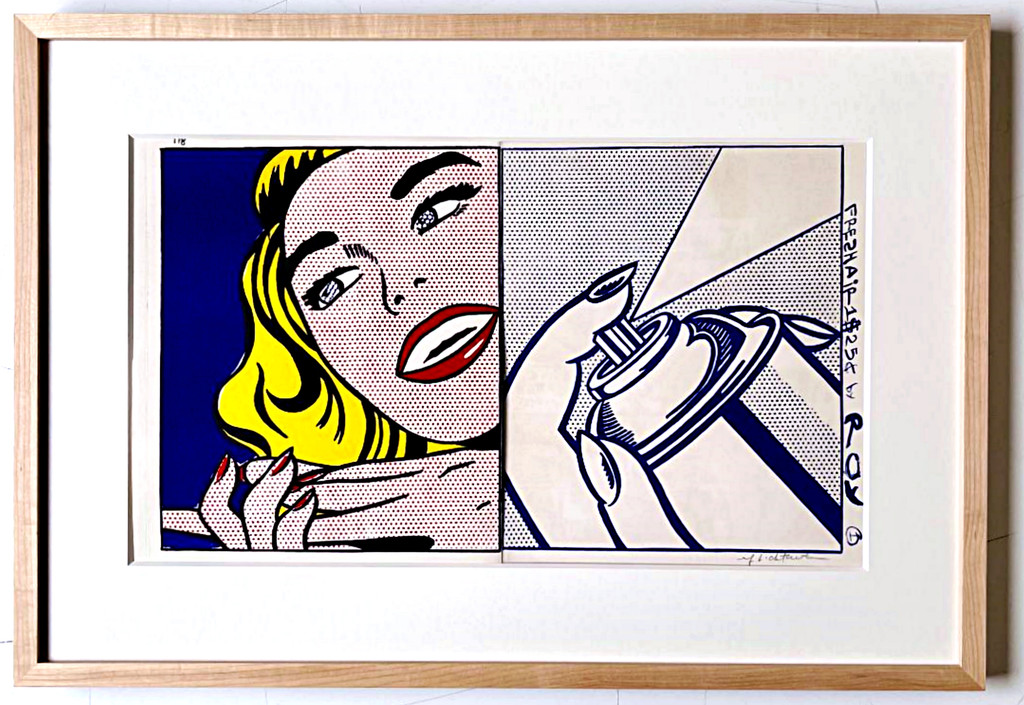
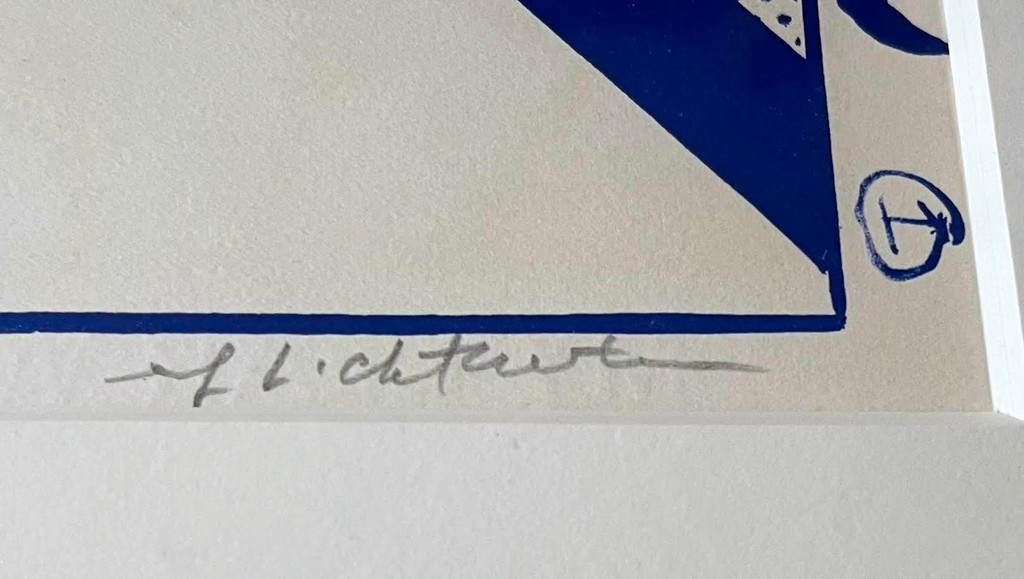
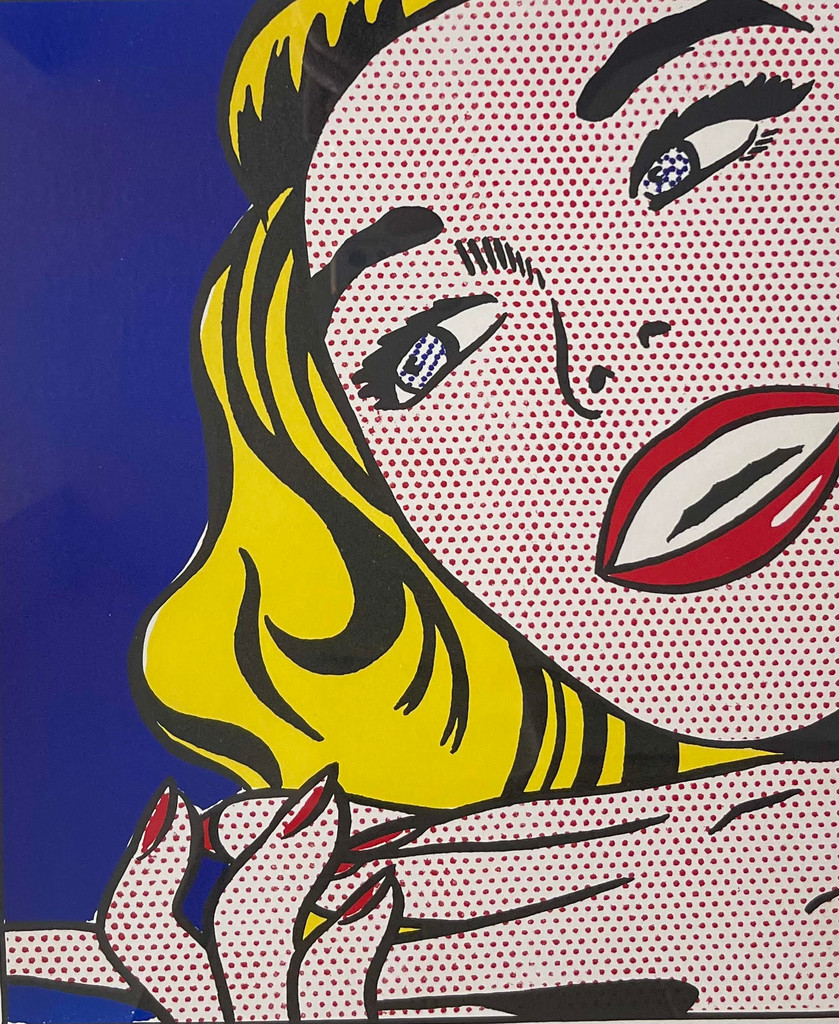



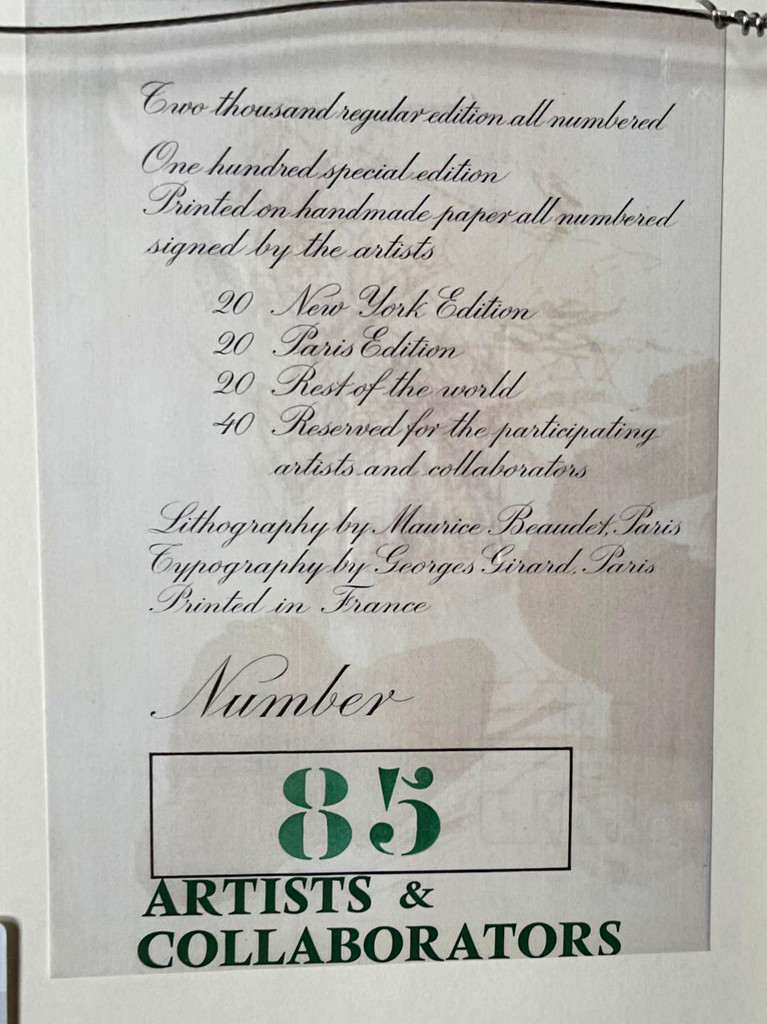









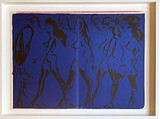
![Sam Francis, Untitled from the Deluxe [signed] edition of the 1 Cent Life Portfolio (hand signed twice, #85/100, acquired from the Estate of Robert Indiana), 1964 Sam Francis, Untitled from the Deluxe [signed] edition of the 1 Cent Life Portfolio (hand signed twice, #85/100, acquired from the Estate of Robert Indiana), 1964](https://cdn11.bigcommerce.com/s-n5q4qk/images/stencil/160w/products/3160/13475/unnamed-5__69194.1694555439.jpg?c=2)
![Sam Francis, Untitled Abstract Expressionist from the Deluxe [signed] edition of the 1 Cent Life Portfolio (hand signed twice, #85/100, from the Estate of Robert Indiana), 1964 Sam Francis, Untitled Abstract Expressionist from the Deluxe [signed] edition of the 1 Cent Life Portfolio (hand signed twice, #85/100, from the Estate of Robert Indiana), 1964](https://cdn11.bigcommerce.com/s-n5q4qk/images/stencil/160w/products/3293/14648/unnamed__00753.1699130063.jpg?c=2)
